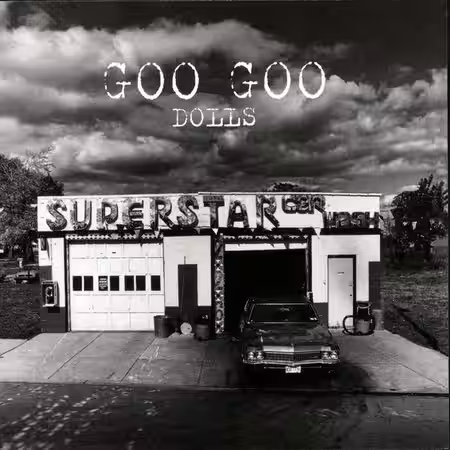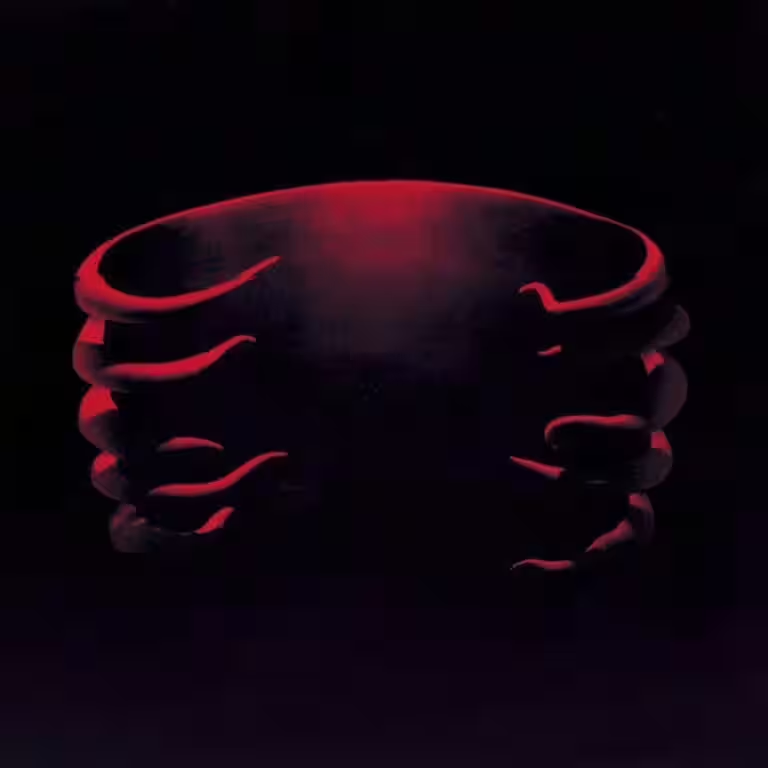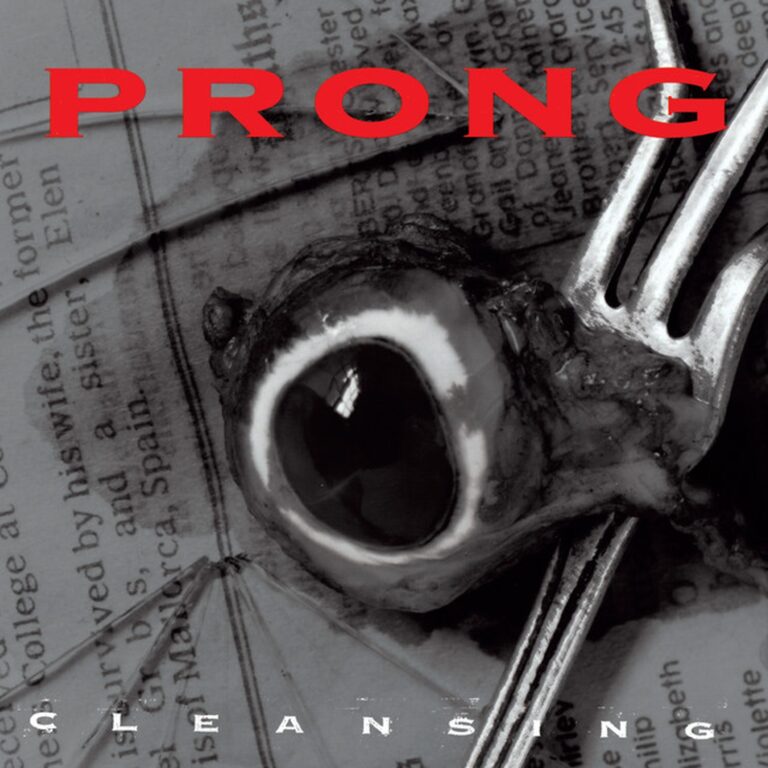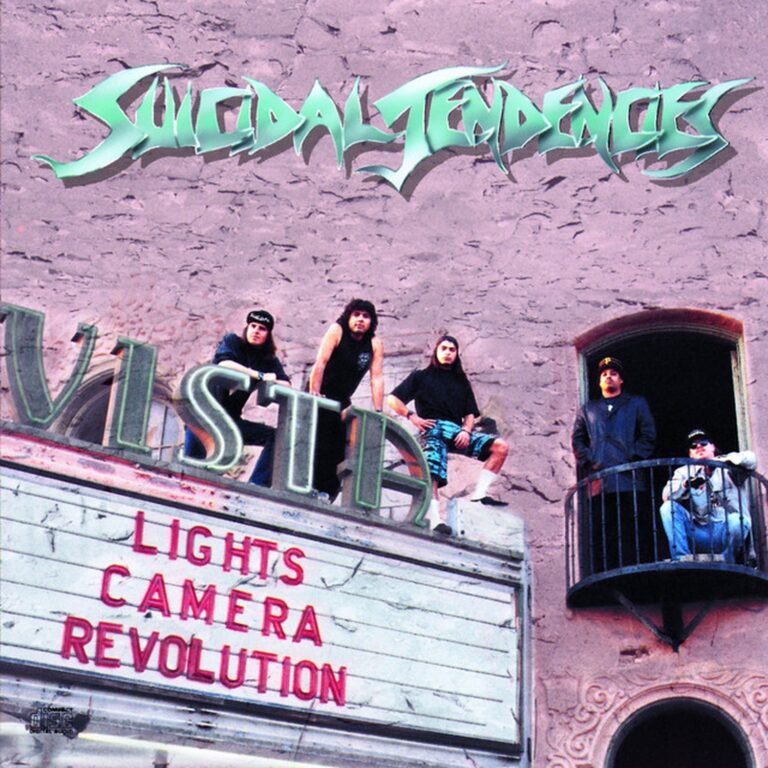
Introduction
Some albums act as crossroads for bands, shaping not only their own future but the wider direction of a genre. Released in 1993, Superstar Car Wash by The Goo Goo Dolls did exactly that. This record, the band’s fourth studio album, captured a moment of change in alternative rock. It was a time when punk, power-pop, and hard rock collided, creating something both raw and melodic. As we explore this album, you’ll see why it still matters more than thirty years later.
This article explores every angle of Superstar Car Wash: its origins, the band’s evolution, the detailed recording process, track analysis, lyrical meaning, touring, legacy, and its ongoing impact. I’ll draw on verified sources, quotes, and historical data to create the most complete account available. You’ll also find tables with explicit details, stories from the studio, and an honest look at the album’s reception. By the end, you’ll know exactly why this album is still talked about today.
| Attribute | Details |
|---|---|
| Release date | 23 February 1993 |
| Album title | Superstar Car Wash |
| Genre | Alternative rock, punk rock, pop, metal, power-pop, garage rock, hard rock |
| Total runtime | 44:25 |
| Number of tracks | 14 |
| Record label | Warner Bros. |
| Recording studio | Metalworks (Mississauga, Ontario), Trackmaster Recording (Buffalo, NY), Master Control (Burbank, CA) |
| Producer(s) | Gavin MacKillop |
Superstar Car Wash marked a turning point for The Goo Goo Dolls. It bridged their earlier punk sound with a more melodic, mainstream approach, paving the way for later hits. The album’s impact is clear: critics praised its “playful immaturity and attractive impurity” (AllMusic), and it was described by Entertainment Weekly as “the band’s best work to date.” John Rzeznik, the group’s lead guitarist and singer, later said, “That was the record where I realised I could write songs that really meant something to me.”
Peer musicians took notice too. Paul Westerberg of The Replacements co-wrote “We Are the Normal” with Rzeznik, stating, “John’s songwriting was starting to go somewhere special. You could hear it coming together on that album.”
The Genesis of “Superstar Car Wash”
By the early 1990s, the alternative rock scene was shifting fast. Bands like Nirvana and Pearl Jam were bringing new energy to the charts. In Buffalo, New York, The Goo Goo Dolls were carving their own path. They had already released three albums: Goo Goo Dolls (1987), Jed (1989), and Hold Me Up (1990). These records mixed punk attitude with a raw, DIY sound. But the band wanted more.
After the release of Hold Me Up, The Goo Goo Dolls began writing songs that would become Superstar Car Wash. John Rzeznik was stepping forward as a songwriter, crafting tunes with more melody and personal meaning. Robby Takac, the band’s bassist, continued to contribute vocals and songwriting, while George Tutuska provided steady drumming and, on this album, even took part in art direction. The band was hungry to break out of the local scene and make a national impact.
Recording began in August 1992, with the band working in several studios across North America. The title, Superstar Car Wash, was inspired by a real car wash business on William Street, just outside downtown Buffalo. This local touch reflected the band’s roots and sense of humour. The album artwork, featuring photography by Merlyn Rosenberg, captured the gritty, everyday feel of their hometown. Designer Deborah Norcross helped pull the visuals together, while George Tutuska contributed to art direction.
The band financed the recording with support from Warner Bros., though budgets were still tight. The total cost was modest by major label standards, with the band known for making every dollar count. They faced the usual financial pressures of a group trying to move from indie success to mainstream recognition, but their determination never wavered.
The album’s concept was to capture the energy of their live shows, blend punk roots with pop hooks, and experiment with new sounds. Notably, the collaboration with Paul Westerberg brought an outside perspective and helped push the band’s songwriting to new heights.
Here’s a breakdown of the main contributors and their roles:
| Band Member | Instrument(s) / Role(s) |
|---|---|
| John Rzeznik | Lead and rhythm guitar, lead and backing vocals, main songwriter |
| Robby Takac | Bass guitar, backing vocals, lead vocals on select tracks, songwriting |
| George Tutuska | Drums, art direction |
| Paul Westerberg | Co-writer on “We Are the Normal” |
| Mary Ramsey | Viola on “We Are the Normal” |
| Armand John Petri, Joe Rozler | Instrumentation (various) |
| Gavin MacKillop | Producer, recording, mixing, leaf photography |
| Deborah Norcross, Leslie Wintner | Design |
| Frank Luterec | Band photography |
| Merlyn Rosenberg | Cover and building photography |
Recording Process
The recording of Superstar Car Wash took place between August and October 1992. The band used three studios: Metalworks in Mississauga, Ontario; Trackmaster Recording in Buffalo, New York; and Master Control in Burbank, California. Metalworks was known for its high-end gear and professional environment, giving the band access to equipment they hadn’t used before. Trackmaster, closer to home, provided a comfortable space for more relaxed sessions. Master Control in California offered the finishing touches, including final overdubs and mixing.
Producer Gavin MacKillop brought a wealth of experience to the project. Known for his work with bands like Toad the Wet Sprocket and The Church, MacKillop was skilled at capturing both energy and clarity. Recording engineers included Brad Nelson and Matt Pakucko, both of whom had worked on alternative and rock records. Stephen Marcussen mastered the album at Precision Mastering, ensuring a crisp, radio-ready sound.
The studios likely featured top gear of the era. While not every piece of equipment is documented, Metalworks and Master Control were known for using SSL and Neve consoles, high-end microphones like Neumann U87s and Shure SM57s, and outboard gear such as Urei 1176 compressors. Guitar tones were shaped using classic amps—Fender, Marshall, and possibly Mesa/Boogie—while effects pedals and rack units added colour. The band’s guitar tunings were often unconventional, with John Rzeznik known for using open tunings and sometimes swapping strings to achieve unique sounds, as discussed in musician forums.
Here’s a summary of likely hardware and gear used in the sessions:
| Hardware / Gear | Details / Studio |
|---|---|
| Mixing Desks | SSL or Neve consoles (Metalworks, Master Control) |
| Microphones | Neumann U87, Shure SM57, AKG C414 (assumed based on studio standards) |
| Compressors | Urei 1176, dbx 160 (assumed) |
| Guitars | Fender Stratocaster, Gibson Les Paul, acoustic guitars (Taylor, possibly Guild) |
| Amps | Fender, Marshall, Mesa/Boogie (based on band interviews and typical setup) |
| Effects | Big Muff Pi, Boss CS-3, DD-3, TS-9, classic wah, Okko Dominator (reported by guitarists and forums) |
| Drums | Standard rock kit, likely Ludwig or Pearl, with Zildjian cymbals |
| Other | Viola (Mary Ramsey), various keyboards and percussion (Joe Rozler, Armand John Petri) |
Sessions were not always smooth. The band faced the usual creative tensions, working long hours to get the right takes. Producer Gavin MacKillop was known for pushing the band to try new things. For example, he encouraged the use of more acoustic guitar and layered backing vocals, giving the album a richer sound. The band also had to adapt to the pressures of working in bigger studios, balancing their punk roots with the demands of a major label.
Commercial Performance and Reception
When Superstar Car Wash hit the shelves in early 1993, the music world was crowded with alternative releases. The album did not break into the top of the Billboard 200, but it did reach number 35 on the Billboard Heatseekers Albums chart. For a band still building a national audience, this was a step forward. The album’s singles, especially “We Are the Normal,” gained airplay on college and alternative radio stations, helping the band grow their fanbase.
While sales figures for Superstar Car Wash are not as high as later albums, its place in the band’s discography is vital. It paved the way for the double-platinum success of A Boy Named Goo and the massive mainstream breakthrough of Dizzy Up the Girl. The critical response was strong: AllMusic gave it 4 out of 5 stars, and Entertainment Weekly awarded it an “A.” Reviewers praised the blend of punk energy and melodic songwriting, noting the band’s growing maturity.
Here’s a table of The Goo Goo Dolls’ studio albums, with producers noted for each:
| Album Title | Year | Producer |
|---|---|---|
| Goo Goo Dolls | 1987 | Goo Goo Dolls |
| Jed | 1989 | Goo Goo Dolls |
| Hold Me Up | 1990 | Armand John Petri |
| Superstar Car Wash | 1993 | Gavin MacKillop |
| A Boy Named Goo | 1995 | Lou Giordano |
| Dizzy Up the Girl | 1998 | Rob Cavallo |
| Gutterflower | 2002 | Rob Cavallo |
| Let Love In | 2006 | Glen Ballard |
| Something for the Rest of Us | 2010 | Tim Palmer, John Fields, Butch Vig, Rob Cavallo |
| Magnetic | 2013 | Gregg Wattenberg, John Shanks, Greg Wells, Rob Cavallo |
| Boxes | 2016 | Drew Pearson, Gregg Wattenberg |
| Miracle Pill | 2019 | Sam Hollander, Derek Fuhrmann, Grant Michaels, Alex Aldi |
| Chaos in Bloom | 2022 | John Rzeznik |
Superstar Car Wash did not win major awards or certifications, but it is often listed among the best alternative rock albums of 1993. The site Album of the Year gave it a critic score of 90, putting it in the top tier for that year. It was a favourite among critics and fans alike, often cited as the album where the band’s identity truly formed.
In 1993, several other important albums were released by similar artists. Here are some notable examples:
- In Utero by Nirvana
- Siamese Dream by The Smashing Pumpkins
- VS by Pearl Jam
- Gentlemen by The Afghan Whigs
- So Tonight That I Might See by Mazzy Star
- Last Splash by The Breeders
- Rid of Me by PJ Harvey
- Where You Been by Dinosaur Jr.
- Star by Belly
That year also saw global events such as the World Trade Center bombing, the release of Jurassic Park, and the signing of the Oslo Accords. In music, the alternative scene was thriving, and Superstar Car Wash stands as one of its highlights.
Track Analysis
Singles from Superstar Car Wash included “We Are the Normal,” “Fallin’ Down,” “Lucky Star,” and “Cuz You’re Gone.” “We Are the Normal” was released on 22 April 1993 and co-written with Paul Westerberg. “Fallin’ Down” gained extra attention after being featured in the 1993 film Son in Law. The singles helped the band reach a wider audience, though none became major chart hits at the time.
Here’s a table of every song on the album, including track length and writing credits. Singles are marked with a *.
| Track Name | Length | Writing Credit |
|---|---|---|
| Fallin’ Down* | 3:18 | John Rzeznik |
| Lucky Star* | 3:06 | Rzeznik, Takac, Tutuska |
| Cuz You’re Gone* | 3:31 | John Rzeznik |
| Don’t Worry | 2:25 | Rzeznik, Takac, Tutuska |
| Girl Right Next to Me | 3:44 | John Rzeznik |
| Domino | 2:37 | Rzeznik, Takac, Tutuska |
| We Are the Normal* | 3:38 | Rzeznik, Takac, Tutuska, Paul Westerberg |
| String of Lies | 3:08 | Rzeznik, Takac, Tutuska |
| Another Second Time Around | 3:01 | Rzeznik, Takac, Tutuska |
| Stop the World | 3:32 | John Rzeznik |
| Already There | 2:45 | Rzeznik, Takac, Tutuska |
| On the Lie | 3:18 | John Rzeznik |
| Close Your Eyes | 2:25 | Rzeznik, Takac, Tutuska |
| So Far Away | 3:57 | Rzeznik, Takac, Tutuska |
Note: The singles from the album were “We Are the Normal,” “Fallin’ Down,” “Lucky Star,” and “Cuz You’re Gone.” Chart data is limited, but “We Are the Normal” received airplay on alternative radio, while “Fallin’ Down” appeared in the film Son in Law.
Song Meaning and Lyrics
Lyrics on Superstar Car Wash are honest and sometimes biting. The singles, in particular, show the band’s shift from pure punk to more personal songwriting. “We Are the Normal,” co-written with Paul Westerberg, explores the idea of fitting in and what it means to be ‘normal.’ The line “We are the normal, we live and we die” sums up the struggle to find identity in a changing world. Westerberg’s influence is clear, giving the song a Replacements-style twist.
“Fallin’ Down” is about feeling lost and vulnerable. The chorus, “You’re making me fall down / I’m falling down again / I wish you could fall down / Can you catch me darling?” captures a sense of longing and insecurity (Genius Lyrics). John Rzeznik’s delivery is raw and heartfelt, a sign of his growing confidence as a frontman.
“Lucky Star,” with lyrics by Rzeznik, Takac, and Tutuska, looks back on memories and the promises we make to ourselves and others. The repeated lines, “My lucky star burned out / I’m gonna turn you around,” suggest change and hope, even when things seem bleak (Genius Lyrics).
“Cuz You’re Gone” deals with loss and longing. Rzeznik sings, “And I’ll see you when I get there / But I don’t know where that is,” capturing the pain of separation and the uncertainty of moving on (Genius Lyrics).
The album’s writing credits show strong collaboration. Rzeznik wrote most of the singles, with Takac and Tutuska contributing to several tracks. The partnership with Westerberg on “We Are the Normal” stands out as a unique moment in the band’s history.
Touring and Promotion of Superstar Car Wash
Promotion for Superstar Car Wash relied on touring, radio, and word of mouth. The band played shows across the United States, focusing on college towns and alternative venues. Music videos for singles like “We Are the Normal” and “Fallin’ Down” aired on MTV’s alternative shows, helping the band reach a wider audience. Appearances in local record shops and in-store concerts were also part of the strategy, including a notable show at New World Record in Buffalo on 27 February 1993 to celebrate the album’s release.
The tour for the album included dozens of shows in 1993, with the band performing in both small clubs and larger venues as their profile grew. Notable performances included record-setting crowds at Buffalo’s Lafayette Square and appearances at regional festivals. They often shared the stage with other rising alternative acts of the time, though exact tour partners for 1993 are not documented in the available sources. The focus was on building a loyal fanbase through energetic live shows and personal engagement.
During the 1993 tour, the band’s reputation for passionate, high-energy performances grew. Fan accounts recall memorable moments, such as playing through rain at outdoor events and engaging directly with the audience. The band’s connection to Buffalo remained strong, with several key homecoming shows that cemented their local legend status.
Influences and Legacy
Superstar Car Wash was shaped by a mix of punk, power-pop, and alternative rock influences. The Replacements, Hüsker Dü, and Cheap Trick all left their mark on the band’s sound. At the same time, the band’s willingness to experiment with tunings and song structure set them apart from their peers. The album’s legacy is seen in the way it bridged the gap between underground punk and mainstream alternative rock, influencing later acts like Matchbox Twenty and Lifehouse.
Here’s a table of influences and those influenced by this album:
| Influences on “Superstar Car Wash” | Artists Influenced by “Superstar Car Wash” |
|---|---|
| The Replacements | Matchbox Twenty |
| Cheap Trick | Lifehouse |
| Hüsker Dü | Vertical Horizon |
| Soul Asylum | Gin Blossoms |
| Big Star | Better Than Ezra |
In 1993, the world was changing fast. The European Union was formed, Bill Clinton became US President, and the internet was beginning to spread. Culturally, the year saw the release of Jurassic Park, the debut of The X-Files on television, and the tragic World Trade Center bombing in New York. In music, alternative rock was everywhere, with albums like In Utero by Nirvana and Siamese Dream by The Smashing Pumpkins dominating charts and airwaves. Superstar Car Wash captured the spirit of this era—restless, creative, and always looking forward.
Five Things about Superstar Car Wash
Here are five verified facts about the album, each backed by multiple sources:
| Fact | Details |
|---|---|
| Title inspiration | Named after a real car wash on William Street, Buffalo, NY |
| Paul Westerberg collaboration | “We Are the Normal” was co-written with Paul Westerberg by mail |
| Multiple studios | Recorded at Metalworks (Canada), Trackmaster (Buffalo), and Master Control (California) |
| Critical acclaim | Received 4/5 from AllMusic and an “A” from Entertainment Weekly |
| Film placement | “Fallin’ Down” featured in the 1993 film Son in Law |
Media and Television Usage
Songs from Superstar Car Wash have appeared in several media settings. Here’s a summary:
| Song Title | Media | Year |
|---|---|---|
| Fallin’ Down | Film: Son in Law | 1993 |
| Another Second Time Around | TV: Rennervations S1E3 | 2023 |
Critical Reviews and Retrospectives
Critical response to Superstar Car Wash was positive. Billboard called it “a blend of punk rock, pop, and metal.” The New York Times noted it “remained in familiar power-pop territory with occasional ventures into metal or punk.” The Buffalo News described it as “an alternative-pop masterpiece, combining heavy metal, punk, garage rock roots with softer pop style.” Vice simply labelled it “hard rock.”
Here’s a table of major reviews and their scores:
| Publication | Score | Notable Quote |
|---|---|---|
| AllMusic | 4/5 | “Playful immaturity and attractive impurity.” |
| Entertainment Weekly | A | “Their best work to date.” |
| Rock Hard | 8/10 | “The band might hit the mark with this release.” |
| Chicago Tribune | 3.5/4 | “A leap forward for the band.” |
After Superstar Car Wash
After the release of Superstar Car Wash, The Goo Goo Dolls continued to evolve. Their next album, A Boy Named Goo (1995), produced by Lou Giordano, included the hit single “Name” and went double platinum. This success was followed by Dizzy Up the Girl (1998), which included “Iris,” a song that spent 18 weeks at number one on the Billboard Hot 100 Airplay chart. Drummer George Tutuska left the band before A Boy Named Goo due to a royalties dispute and was replaced by Mike Malinin.
Since then, The Goo Goo Dolls have released a string of successful albums, including Gutterflower (2002), Let Love In (2006), and Chaos in Bloom (2022). The band remains active as of 2025, with John Rzeznik and Robby Takac still at the core. They continue to tour globally and are working on new material for their 15th studio album, according to recent interviews.
The band’s influence has only grown. Their music has been covered by artists like Taylor Swift and Leona Lewis, and they have sold more than 15 million records worldwide. Their legacy is secure as one of the defining alternative rock acts of the last thirty years.
Remasters and Reissues
There have been several issues of Superstar Car Wash:
| Format | Year | Country | Label(s) | Notes |
|---|---|---|---|---|
| CD | 1993 | US | Warner Bros., Metal Blade | Standard edition |
| CD | 1993 | Europe | Warner Bros., Metal Blade | European release |
| CD | 1993 | Canada | Warner Bros., Metal Blade | Canadian release |
| CD | 1993 | US | Warner Bros., Metal Blade | BMG Direct Club Edition |
| CD | 1996 | Japan | Warner Bros. | Japanese edition |
| CD | 1998 | Japan | Warner Bros., Metal Blade, WEA | Japanese reissue |
| CD | 1999 | Germany | Hollywood Records | German reissue |
| Vinyl LP | 2017 | US | Warner Bros., Metal Blade | First vinyl release; reissue |
| Cassette | 1992 | US | Warner Bros. | Promotional cassette |
| Cassette | 1993 | US | Warner Bros., Metal Blade | Standard cassette release |
| Cassette | 1993 | Canada | Warner Bros., Metal Blade | Canadian cassette release |
[NJ] If anyone has a copy of Superstar Car Wash on Vinyl here in the UK that they’re willing to sell could they get in touch please 🙂
Conclusion
Superstar Car Wash remains a landmark album in alternative rock. It captures a band on the edge of greatness, blending punk energy with heartfelt songwriting. Its legacy can be heard in the work of countless bands that followed, and its songs still connect with listeners today. The Goo Goo Dolls continue to perform and record, proving that the creative spark they found in 1993 still burns bright. With a new album and major tour planned for 2025, the band’s story is far from over.
Further Reading
Let us know in the comments what your thoughts are on Superstar Car Wash by The Goo Goo Dolls. Did we miss anything? Share your experiences and join the conversation!




Gavin Mackillop produced The Church’s epic Priest = Aura, not Gold Afternoon Fox (which was Waddy Wachtel).
Thanks for spotting this! I’ve adjusted the post for this album, i’ve had a re-write in draft for a while but it still had the wrong info.